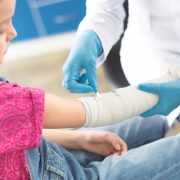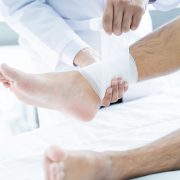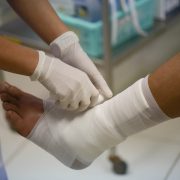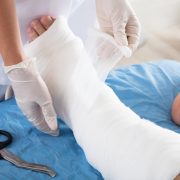Wounds Treated At San Diego Wound Care Center
Wounds can be a serious matter when left untreated. So the best thing that you can do is to prevent it from becoming a major issue due to bacterial infection. Such would include the services provided at the San Diego Wound Care Center.
But you might ask which types of conditions are treated at a wound care center? Well, here are some of the major conditions that could be remedied.
Diabetic Ulcers
This condition can be treated by using appropriate therapeutic footwear, antibiotic therapy, daily saline dressings, debridement when needed, optimal control of blood glucose, and correction and evaluation of peripheral arterial insufficiency.
If you are a patient with a diabetic foot ulcer, then you should receive care from physicians, podiatrists, surgeons, and pedorthists who have an active interest in such a complex problem.
Pressure Ulcers
This condition is also referred to as bedsores, which can affect patients that are bedridden. If you are a patient with such a condition, the doctor will try to look closely at your skin and determine if you have indeed pressure ulcers and how bad it has become.
Staging at this point is necessary so that the doctor will be able to find out which treatment should suit you best. A blood test could be conducted to assess your overall health. You will be treated by reducing the pressure on the skin affected, caring of the wounds, controlling pain, maintaining good nutrition, and preventing the infection.
Venous Insufficiency Wounds / Venous Stasis Ulcers
These are often referred to as open sores that may occur when the veins fail to push back blood to your heart as they should. Since blood backs up in the veins, it could build up pressure. When you fail to treat this condition, there will be increased pressure and excess fluid to cause an open sore.
When you are experiencing such a condition, you should call your healthcare provider, particularly when there are signs of infection. Such would include the following signs.
- Bleeding
- Fever or chills
- Increased pain
- More drainage that is cloudy or yellowish
- Redness, swelling, and increased warmth around the wound
Vasculitic Ulcers
Vasculitic ulcers commonly appear on the leg, which can be the manifestation of cutaneous vasculitis in connective tissue diseases, such as rheumatoid arthritis. The actual causes of vasculitis may not be known, but the common concept is that there are an abnormal immune response and an inflammation of the blood vessels.
The severity of the condition will be observed through the following parameters.
- Location of the ulcer, either on the leg or foot
- Exposure of the tendon or bone
- Edges of the ulcer that could either be flat or raised to determine the type of ulcer, arterial or venous
- Any discharges present that indicates infection
The treatment for vasculitic ulcers is the application of cortisone-based medications. This will be able to suppress the immune response in order to stop the progression of the disease. Thus, it is important that you consult a professional healthcare provider from a wound care center to avoid any complications.
We specialize in diagnosis and treatment for any and all wound care issues for patients in San Diego County, Orange County, and Riverside County. For more information or to set an appointment, please contact us.










